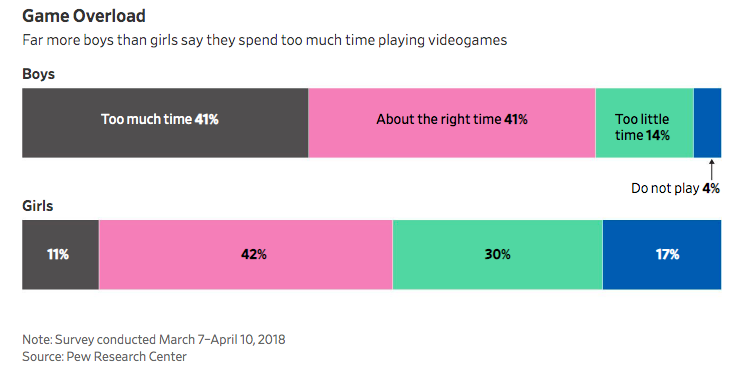I came across an interesting article from The Wall Street Journal this morning in my news feed. The article focuses on how boys and girls appear to engage with technology in different ways. Granted, the debate on whether male and female brains are inherently different has long been debated, but it got me thinking about the use of multimodal technology in the classroom. Given the long history of perceived biases toward ‘male’ subjects such as math and science, I think it might be worth turning a critical eye toward how we use new technology in the classroom in order to ensure we’re giving equal opportunity to all students.
“Academics who study gender differences also have faced backlash for pointing out that boys and girls aren’t the same”
The article focuses on recent research published by the Pew Research Center in 2017. In the study, led by Yale psychiatry professor Marc Potenza and a group of Chinese researchers, teenage males and females were subjected to a number of stimuli while being monitored by MRI, specifically looking for spikes in the areas of our brains responsible for reward and addiction. In short, results showed that males were more likely to show a spike in brain activity in areas associated with addiction while gaming, while females were not. Girls were more likely to be drawn toward social networking websites as a way of forming social bonds and sharing. The takeaway from this being that adolescent girls were more prone to FOMA (Fear of Missing Out), possibly leading to increased cases of depression and anxiety.

So, what does this mean for multiliteracy as educators and why might it be significant?
It’s no secret that savvy teachers will use the most current technology to connect with their students. However, does it matter what kind of technology we use? Recent studies have shown certain benefits of gaming in adolescent development as an educational tool, as well as the benefits of social media and social networking sites in the classroom. I took this article as a reminder that however much we introduce technology in the classroom, we must remember that not every student will receive it in the same way.
Food for thought, no? I’d love to hear your experiences. Leave a comment if you can.
Leave a Reply